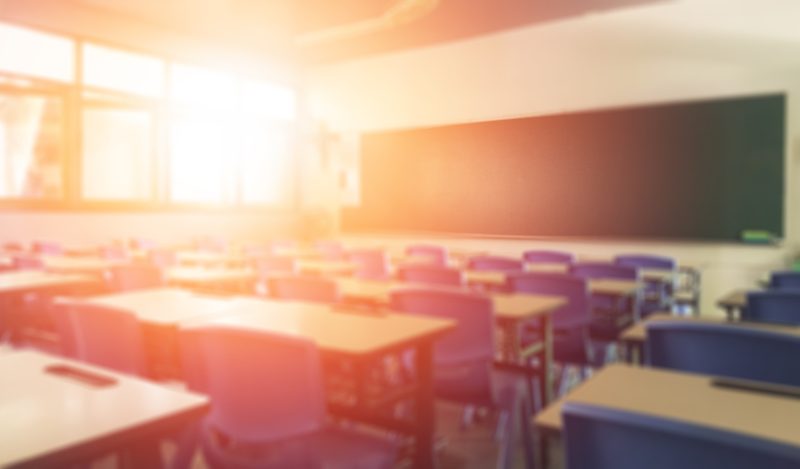As mask requirements are loosened in schools around the country, experts continue to weigh in about whether they have a role in protecting students with disabilities such as health needs or immunocompromised status.
A recent federal lawsuit in Virginia, brought by parents of children with disabilities including significant health needs, cites two laws, the Americans with Disabilities Act and the Rehabilitation Act, in seeking to maintain districts’ ability to mandate masks in schools. These important laws prohibit schools from segregating or discriminating against students with disabilities and require reasonable accommodations and modifications to ensure that students can access and participate in education.
The Virginia complaint is supported by the American Civil Liberties Union and, like others made in recent months, implicitly hinges on the assumption that all-day masks, for all learners, in all settings, in all schools, are reasonable as well as necessary for students with disabilities to access learning. A recent document, titled, “The Urgency of Equity,” makes this case as well in advocating for all learners to wear high-quality masks in schools for reasons of equity. However, growing evidence calls that view into question.
Parents of immunocompromised children face unique and sometimes wrenching challenges and deserve empathy and support. But parents have not been well served by policymakers and some school officials, who represent, against accumulating evidence, that cloth masks, worn with imperfect fidelity by young children, will keep immunocompromised students safe from an airborne virus.
Policymakers and school officials, ethically, must also acknowledge that masks alter the educational environment for all students, including those with hearing, learning, sensory or psycho-emotional disabilities.
Federal law relies on the term “reasonable” to describe the nature of accommodations and modifications that schools must provide. It might be reasonable, for example, to require a school to purchase a specialized classroom light to avoid triggering a student’s migraine disorder. But it’s likely not reasonable to keep a general education classroom dark and silent all day to accommodate that need. In fact, such a provision would fundamentally change instruction for all students and might preclude access for children with other disabilities.
This hypothetical example, of course, isn’t a perfect analogy to the present situation; rather, it illustrates the challenges in defining and sustaining an accessible educational environment, and the practical limits in operationalizing concepts such as “access” and “participation.” When mandated masks make it impossible for children with dyslexia to receive necessary phonics instruction, for example, they may create additional problems of access and pose new barriers to participation for children also protected under federal law.
If school masks were proven to contain the spread of Covid-19, balancing these issues would be more challenging. But the evidence is increasingly clear. Masks, especially cloth ones, and especially when worn by students who may sneeze, cough, and touch their face, are simply not effective in that goal.
Schools with and without mandated masks have demonstrated comparable rates of viral spread, likely related to overall community transmission rather than in-school interventions. A fundamental question guiding the selection of any in-school intervention, including health-focused ones, is whether it is effective. It’s neither practical nor ethical to diminish students’ long-term experience for interventions that aren’t proven to work.
School is critical for children precisely because it offers them structure, social routine, access to interaction, and emotional support as well as learning opportunities. Mandatory masks interfere with all of those–they impact daily routines, behavioral norms, social interaction, access to facial expressions and interpersonal communication, and ability to access important content such as phonics or information from discussions. These effects risk placing children with disabilities in particular, who are already experiencing substantial learning loss, even further behind.
We can and should make schools more accessible for children with disabilities during a pandemic, using ventilation, cleaning, streamlined transitions to individual remote or hybrid learning, attendance flexibility, and improved access to online curriculum. Technology can enhance access and build meaningful relationships with families, caregivers and healthcare teams, a critical component of ensuring access for students with disabilities. Differentiation and consideration on the part of school staff can help to meet specific individual needs.
But mandatory masks for all children fundamentally change the school environment in significant and negative ways and can alter well-being for all learners, particularly impacting those who need additional support. They don’t make an already-safe school environment (in which students can choose to wear masks or respirators) any more safe.
Meanwhile, mask enforcement constitutes an additional burden for school staff who would otherwise have more time for specialized instruction, programming, and connecting with families. The energy of already-overwhelmed educators, in this most overwhelming year, is best directed toward more effective and less restrictive ways of supporting students with disabilities.
Published under a Creative Commons Attribution 4.0 International License
For reprints, please set the canonical link back to the original Brownstone Institute Article and Author.









